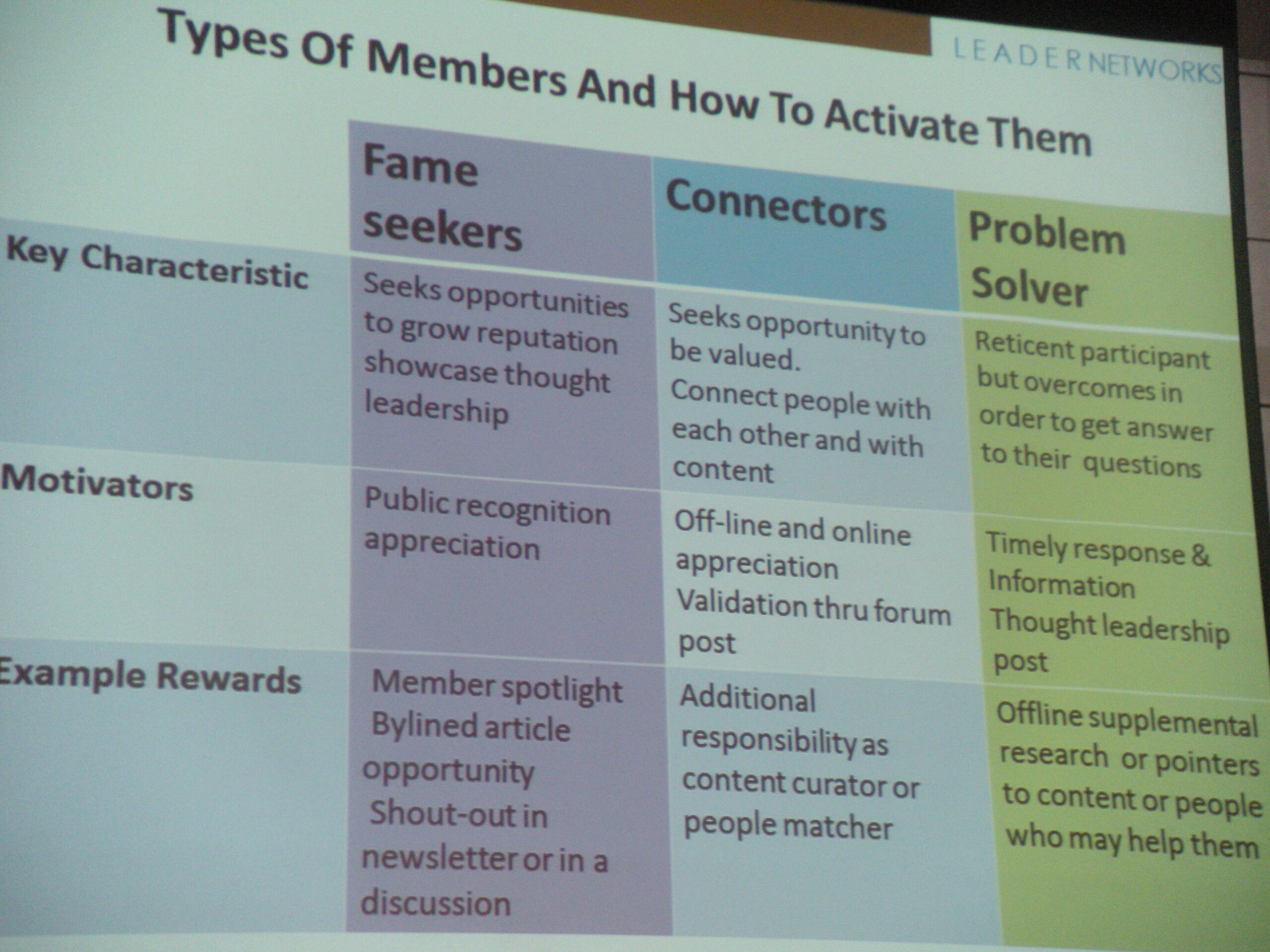 This week at the PRSA Digital Impact Conference Vanessa DiMauro, CEO of Leader Networks talked to attendees about the benefits of online communities as part of a B2B social media strategy.
This week at the PRSA Digital Impact Conference Vanessa DiMauro, CEO of Leader Networks talked to attendees about the benefits of online communities as part of a B2B social media strategy.
According to DiMauro, nearly 2/3 of organizations surveyed are engaged in private, online communities hosted by companies that sell them computer hardware, software or services.
The average visit in an online B2B community is 10 minutes, with 1 visit every 5-7 days.
What B2B organization wouldn’t want roughly 40 minutes of time per month with members to help solve problems, learn how they are using tools and what topics they are most interested in?
Building an online community gives organizations an opportunity to strategically connect with its audience in meaningful and sometimes deeper ways through private interactions.
Many companies continue to respond chaotically to social chatter. With this, they can end up with what Vanessa calls social media muddle.
Part of that muddle is due to baseline measurement such as number of fans/followers. Vanessa recommends going beyond such measurements and make sure someone in the organization is responsible for reviewing social interactions so that they can be strategically brought back to the organization and impact future marketing decisions.
Online communities can help companies shift from chaos to focus. Specifically moving from a set of discrete interactions to a dynamic, meaningful relationship which can impact business outcomes.
Benefits of online communities can include deepening customer relationships, building greater brand equity, providing better customer care, shortening product innovation cycles, extending and accelerating product and service delivery and delivering improved financial returns.
Which companies need online customer communities the most?
Those where customers are:
- open to sharing information with other customers
- purchasing a platform product and need to communicate with each other about how to capitalize
- willing to participate in off-line user groups or in-person customer summits
And where customer problems are:
- critical, ongoing and ever-changing
- such that knowledge for solving problems becomes obsolete quickly
- those where other customers can gain major value by learning from the experiences of other customers
- urgent
Here are 3 models for communities:
1. Gated
- select, narrow target audience
- acceptance criteria established
- protected dialog
- managed topical agenda
- supported by the organization
2. Public
- open call, all interested
- member directed
- public forum
- ad generated support
3. Hybrid
- tiered membership
- consensus/trend driven
- public forum with private areas
- thought leadership
- hybrid revenue
An example online community is the Palladium Group’s Execution Premium Community. The audience includes senior strategy professionals from organizations worldwide.
The case for the community included; helping increase customer intimacy, raising awareness of products and services, tapping into leading trends in strategy execution and creating a new revenue-generating service line.
Results to-date include more than 50% of the membership from non-US countries and its ongoing revenue, which it started generating at month 6.
Then she reviewed the online community LexisNexis Investigators Network (LNIN). The audience includes federal, state and local law enforcement and currently has more than 7,000 registered members.
This site aimed to bridge the gap between different law enforcement agencies.
Results to-date include over 4,000 members in the first year, members from all 50 states and 3 new product enhancements implemented.
The following are 3 Operations Processes communities need to succeed:
1. Expert community facilitation
2. A healthy balance of Institutional Content and User Generated Content
3. Persistent and programmatic outreach
For B2B communities to work, they need to solve a problem, accelerate a process and/or make something easier.
To get members interacting, know the types of members and what motivates them.
- Fame Seekers – seek opportunities to grow reputation and showcase thought leadership
- Motivators – seeks opportunity to be valued. Connect people with each other and with content
- Problem Solvers – reticent participant but overcomes this in order to get answers to their questions
A member who uploads a photo of his/herself is 7x more likely to post a comment. Be sure to pay attention to the members who join and upload a photo first. These people are likely fame-seekers and can be encouraged by member spotlights, shout-outs or in discussions.
Understanding the members of the community, their individual goals and what drives them to share and engage are all critical to building a successful community.
Online communities may be the right next step for organization’s who want and need to connect with customers who have persistent needs and can learn from the collective wisdom of others.
Supporting users as they transition to customers, and across the customer life cycle, is a key message in TopRank Online Marketing CEO Lee Odden’s new book Optimize available in for Kindle and Nook now, with hard cover copies shipping starting on April 17th.


